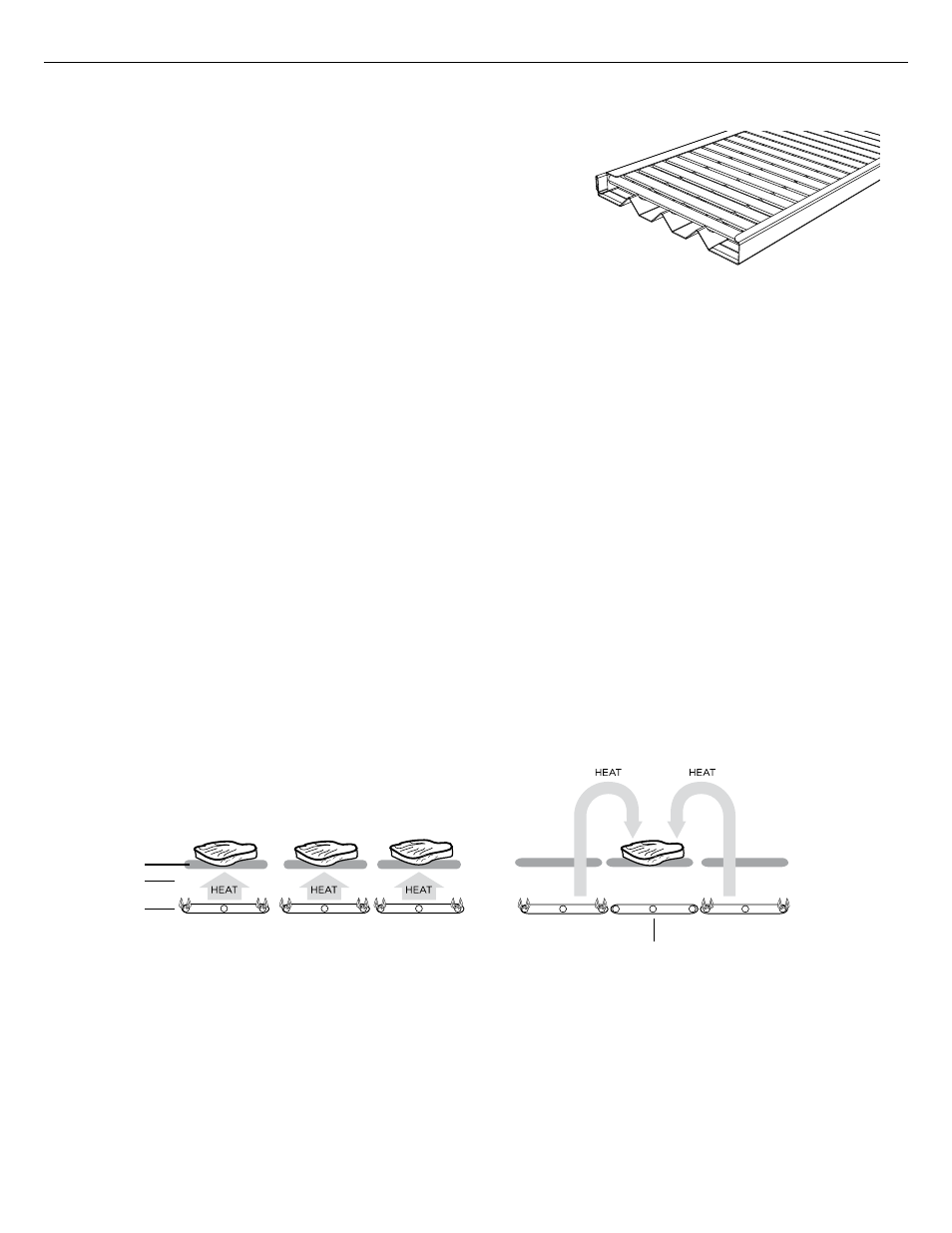Using the grill, Important – DCS Owner's Guide User Manual
Page 27

25
USING THE GRILL
Grilling
Grill
Each grill section consists of a large stainless steel burner,
stainless steel heat baffles, a series of ceramic rods encased
in a stainless steel radiant, and a stainless steel heat retaining
grate. Each burner is rated at
25,000 Btu/hr or 26,5MJ/h.
Below the burners there is a stainless steel heat baffle which
reflects usable heat upward into the cooking area and reduces
temperatures of the drip pan below. Above the burners are
stainless steel radiants which encase the ceramic rods and
protect the grill burner ports from blockage (Fig. 17).
The grill is supplied with radiant ceramic rods. Because of the porosity of ceramic rods, performance
is superior in the rods’ ability to capture heat as it rises from the grill burners. They also possess the
thermal mass needed for even cooking performance. Flare ups are controlled because the radiant
ceramic rods keeps grease from getting to the flames and igniting. The intense heat produced by
this system produces true grilled flavor as fats and juices are brought to the surface of the food and
caramelized. Discoloration of the grates is normal after use.
Direct/indirect cooking notes
Direct cooking involves placing food on grates over lighted burners. Use this method for foods that
take less than 20 minutes to cook or to sear larger items at the start of the cooking process that
will then be indirectly cooked to finish. Place items on the preheated surface and leave until they
no longer stick. Never spray water on the grill or into grease. The patented Grease Management
System™ reduces flare-ups by channeling grease away from the flame. Use a meat thermometer to
achieve desired doneness and remove items one degree below how you would like to enjoy them, as
the resting period before carving or consuming will raise the temperature.
Indirect cooking method is a popular alternative to direct heat grilling. Indirect cooking uses heat
from an adjacent heat source to cook food and, in many cases, reduces the possibility of overcooked
or overly browned food. Foods most appropriate for indirect grilling included breads, thicker pieces
of chicken or steaks. Indirect cooking involves placing the food to the side of or above the heat
source instead of directly over the flame and then closing the grill top to create an oven effect. All
the items you usually oven-roast can be grilled to perfection using indirect heating. Preheat the
burners surrounding the food to be cooked. Use your secondary cooking tray to hold food and add
water or chicken broth to the tray to prevent the natural juices from burning or evaporating.
IMPORTANT!
y
Season your grates before first use and then periodically to protect the grate surface from corrosion,
and to stop food sticking. See 'Care and Maintenance'. To season the grates, pour a tablespoon of
vegetable oil on a soft cloth and rub on both sides of the grates. Only a light coating is needed and
some smoke may be visible during the preheating.
y
Grilling requires high heat for searing and proper browning. Most foods are cooked at the “MEDIUM”
to “LOW” heat setting for the entire cooking time. However, when grilling large pieces of meat or
poultry, it may be necessary to turn the heat to a lower setting after the initial browning. This cooks
the food through without burning the outside. Foods cooked for a long time or basted with a sugary
marinade may need a lower heat setting near the end of the cooking time.
FIG. 17
BURNER
GRILL RACK
FOOD
Direct Heat Grilling
Indirect Heat Grilling
BURNER OFF
EN
